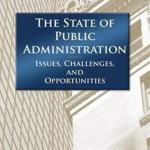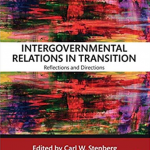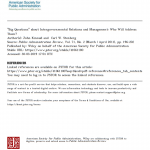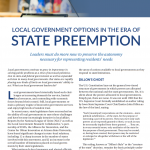Topic: Intergovernmental Relations

Historic Relevance Confronting Contemporary Obsolescence? Federalism, Intergovernmental Relations, and Intergovernmental Management
Collaborative public management, managing across boundaries, leveraging networks, and governance through networking are contemporary concepts that characterize a near tsunami sweeping across recent public administration literature. These novel and creative formulations describe, analyze, and prescribe complex modes of management for the current practicing public administrator. In retrospect, Rhodes (1996, 658) was prescient in claiming, “governance is about managing networks.”
The significance and relevance of the “collaboration-networking-governance movement” cannot be denied (Robinson 2006; Bingham and O’Leary 2008; O’Leary 2009). This chapter does not challenge or question the promising paths chartered in that literature. Rather, it explores the antecedents and foundation stones on which the triumvirate of collaboration-networking-governance is erected. Those-building block components are represented by federalism and its legacy concepts, intergovernmental relations and intergovernmental management, concepts that have framed governance and management thinking for decades.
Cite as:
Menzel, D., White, H., S. Wright D., Cho, C. (2011). The State of Public Administration: Issues, Challenges, and Opportunities.
…
Continued
Intergovernmental Relations in Transition: Reflections and Directions
The field of intergovernmental relations has changed substantially over the past five decades. It maintains a critical and evolving role in the US federal system as well as in public policy and administration. Building upon the legacy of Deil S.Wright’s scholarship, this collection of essays by distinguished scholars, emerging thought leaders, and experienced practitioners chronicles and analyzes some of the tensions and pressures that have contributed to the current state of intergovernmental relations and management.
Although rarely commanding media attention by name, intergovernmental relations is being elevated in the public discourse through policy issues dominating the headlines. Many of these intergovernmental issues are addressed in this book, including health insurance exchanges under the now-threatened Affordable Care Act, and the roles of the federal, state, and local governments in food safety, energy, and climate change.Contributors interpret and assess the impacts of these and other issues on the future directions of intergovernmental relations and management. This book will serve as an ideal text for courses on intergovernmental relations and federalism, and will be of interest to government practitioners and civic and nonprofit organization leaders involved in public policy and management.
Cite as:
Stenberg, C. and Hamilton, D. (2018). Intergovernmental Relations in Transition. Milton, UNITED KINGDOM: Routledge.
…
Continued
“Big Questions” about Intergovernmental Relations and Management: Who Will Address Them?
Since the death of the U.S. Advisory Commission on Intergovernmental Relations (ACIR) in 1996, important intergovernmental issues have remained on the country’s agenda. Shortly after the 2008 presidential election, for example, the Federal Systems Panel (2008) of the National Academy of Public Administration delivered an “Intergovernmental Agenda” to the incoming administration asserting a need to “restructure intergovernmental management across the federal system” on the basis of “collaboration rather than command and control.” The agenda cited such policy challenges as health care access (e.g., Medicaid) and cost reductions, housing, natural
disasters, terrorism, energy consumption, unemployment, and infrastructure. The agenda disappeared in the bowels of the White House.
Cite as:
Kincaid, J., & Stenberg, C. (2011). “Big Questions” about Intergovernmental Relations and Management: Who Will Address Them? Public Administration Review, 71(2), 196-202. Retrieved from http://www.jstor.org/stable/41061180
…
Continued
Local Government Options in the Era of State Preemption
Local governments have historically faced such challenges as increasing demands for service, limited
fiscal resources, and contending with economic forces beyond their control. Still, local governments remain a primary engine of innovative government services and enjoy high levels of resident trust. In recent years, state legislatures have encroached on the ability of local governments to meet these challenges and have become increasingly intrusive in local affairs. Reports by the National League of Cities (NLC)1 as well as the Local Government Research Collaborative,2 a partnership of ICMA, the Alliance for Innovation, and the Center for Urban Innovation at Arizona State University, have found significant changes in state-local relations, including: 1) a sharp increase in the number of states
involved with this movement, and 2) an increase in the overall number of limitations placed on local governments by their state legislatures. What options do local managers and elected officials have as they try to tailor local public services to the needs and preferences of residents? This article provides an overview of this changing environment and highlights the array of actions available to local governments as they respond to state limitations.
Cite as:
Swindell, D., Svara, J. and Stenberg C.”Local Government Options in the Era of State Preemption”
…
Continued
